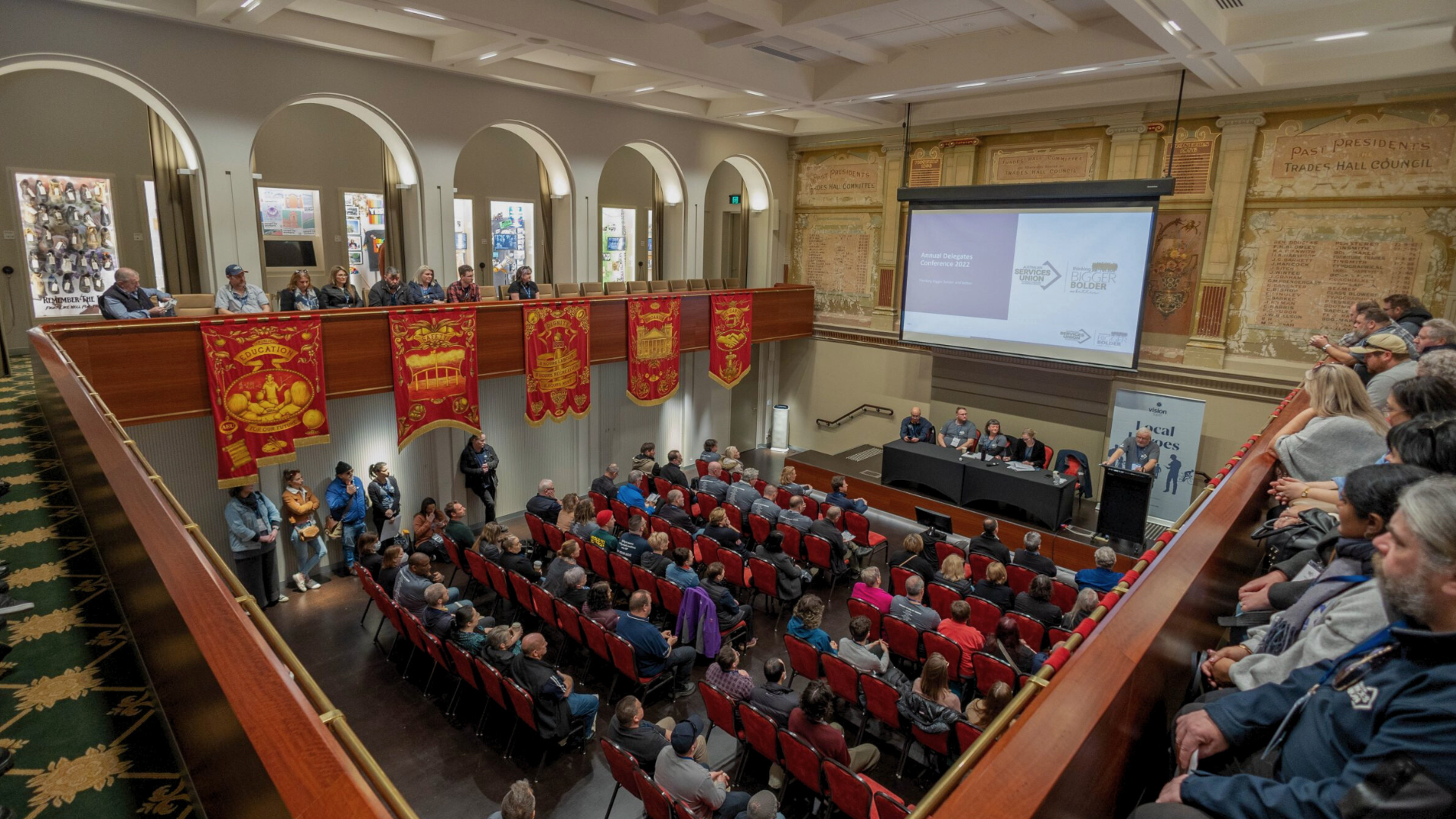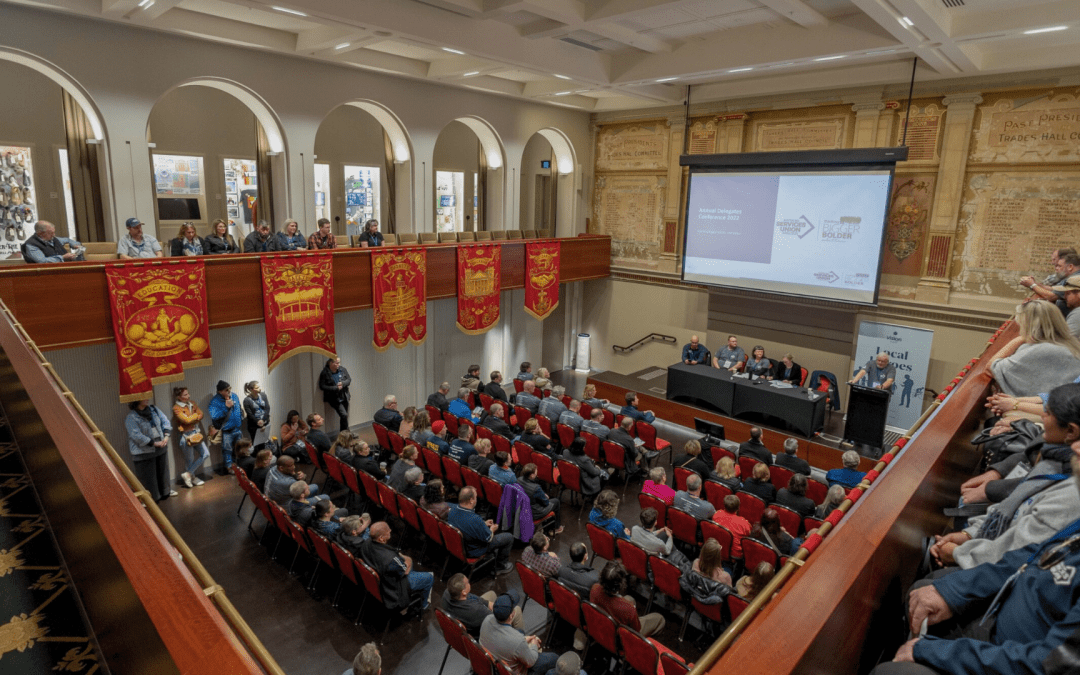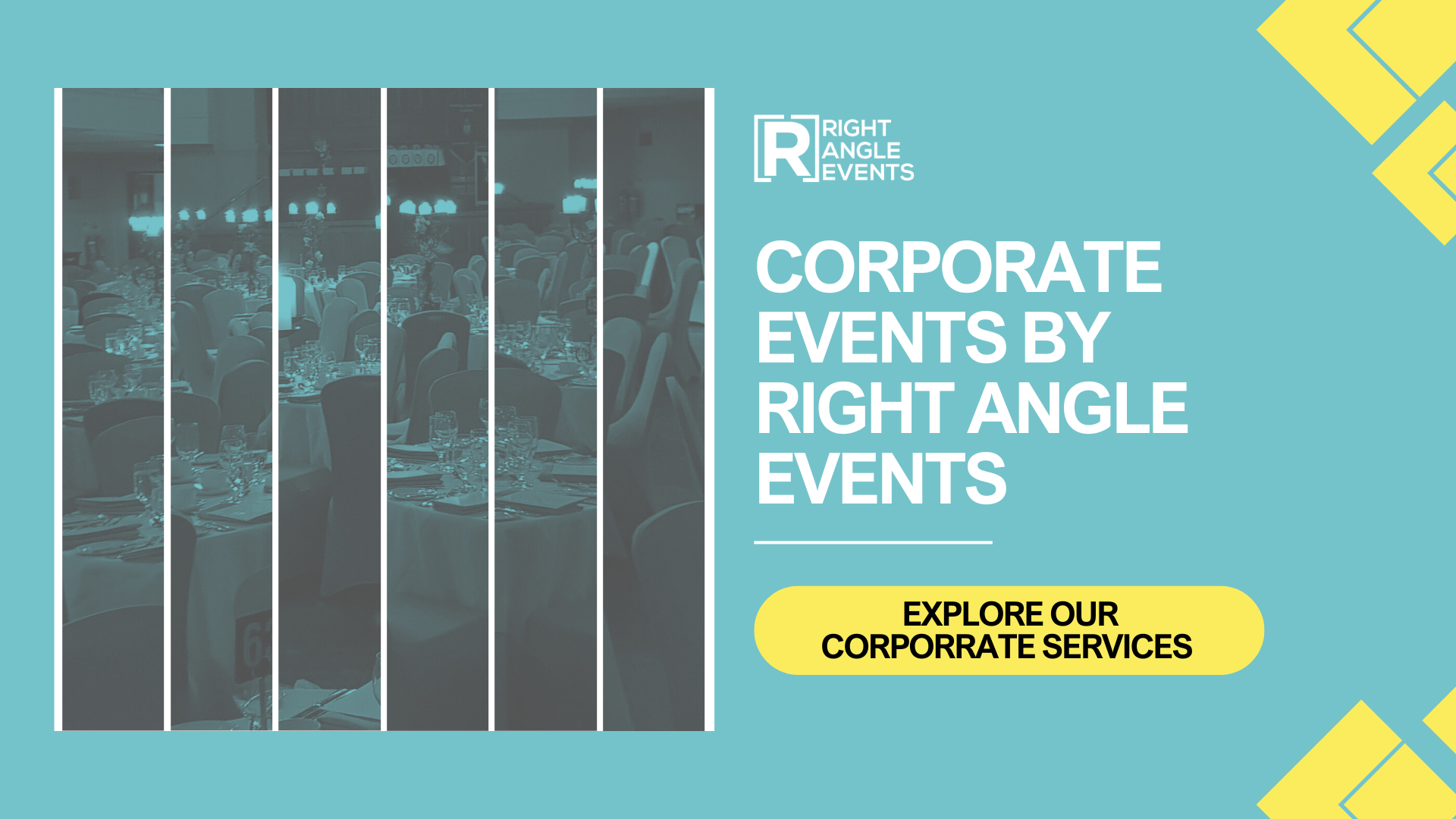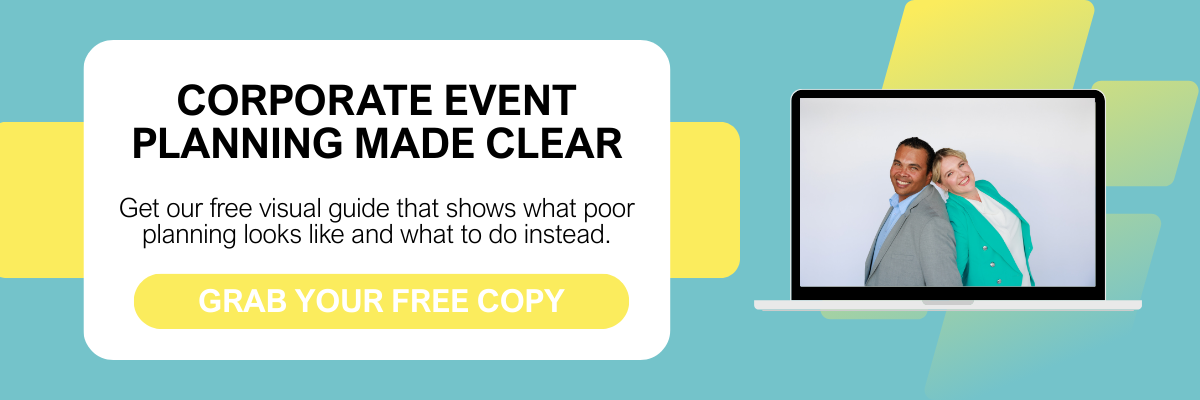Corporate events carry high expectations and significant stakes. Whether you’re organising a product launch, conference, or networking function, the pressure is on to deliver a seamless experience that aligns with business goals, strengthens relationships, and leaves a lasting impression.
Recent industry data underscores the importance of thorough planning. According to a 2024 report by IBISWorld, the Australian event promotion and management services industry reached a market size of $10.8 billion, reflecting a 2.7% growth from the previous year. This growth highlights the increasing demand for well-executed corporate events and the importance of strategic planning to meet organisational objectives and attendee expectations.
With so many components to manage and potential pitfalls to avoid, even seasoned professionals can encounter challenges that compromise the event’s success. This blog outlines ten common mistakes in corporate event planning and offers practical solutions to ensure your next event runs smoothly from start to finish.

Corporate Events: Unique Demands and Expectations
Oftentimes, corporate events and public-facing activations are treated the same. But the goals are very different. Corporate events are not only about creating a good experience—they’re expected to support business outcomes like strengthening client relationships, building team connections, sharing information, or reinforcing brand values.
These events also involve more planning. You might need to work with internal teams, senior managers, external partners, and technical suppliers. Small mistakes can reflect poorly on the organisation, especially when the event involves important guests or decision-makers. That’s why every detail matters from the agenda and AV setup to the quality of presentations and follow-up communications.
Let’s make yours a success by avoiding the 10 common mistakes below.
10 Common Gaps in Corporate Event Planning
1. Planning Without a Clear Purpose
A corporate event needs a clear, well-defined objective to succeed. Without it, your event risks becoming unfocused, with content that doesn’t resonate and messaging that doesn’t align. Whether the goal is to launch a product, engage clients, or build your brand, everything from the agenda to the venue should support that goal. Without a purpose to guide your decisions, the event could fail to leave a lasting impact on your audience.
Solution: Before you begin planning, take time to clarify the event’s primary objectives. What key message do you want your attendees to remember? Keeping this goal in mind ensures every element, from the schedule to the speakers, aligns with your purpose.
Focus and alignment are the backbone of a successful event. Make sure the purpose drives every decision to create a meaningful experience for your attendees.
2. Ignoring the Audience Profile
Corporate events should always cater to the specific needs and expectations of the audience. Understanding the audience is key to shaping the event’s tone, content, and overall experience. Without considering who will be attending, your event risks becoming irrelevant or disconnected. This can lead to disengaged participants, missed opportunities to connect, and a lack of impact on your business objectives.
Solution: Research your audience before finalising the event details. Are they senior leaders, technical experts, or early-career professionals? Adjust the format, content, and style to suit their preferences and ensure the event resonates with them.
Understanding your audience ensures the event delivers maximum value. By tailoring the experience, you set the stage for stronger connections and more meaningful outcomes.
3. Treating the Run Sheet as a One-Off
The run sheet provides the structure and timing needed to ensure each session, speaker, and activity flows smoothly. However, it’s common to treat the run sheet as a static document, which can lead to confusion when unforeseen changes arise, such as delays or last-minute adjustments. The reality is that corporate events are dynamic, and flexibility is needed to adapt quickly to changes.
Solution: Keep the run sheet flexible and update it in real time as changes occur. Ensure the team is aligned by regularly reviewing the schedule and making necessary adjustments to keep everything on track. Encourage clear communication among all stakeholders to stay ahead of any changes and ensure a smooth execution.
A dynamic run sheet helps you respond to changes without disrupting the event. This proactive approach ensures that every shift is managed effectively, keeping the event on course.
4. Overcomplicating the Agenda
An agenda packed with too many activities can quickly become overwhelming for attendees. Overloading the agenda can also diminish the impact of key content, as participants may struggle to absorb everything. A complicated agenda can lead to disengagement and missed opportunities for connection, ultimately undermining the event’s objectives.
Solution: Focus on delivering key content that aligns with your event’s purpose. Streamline the schedule to ensure there’s ample time for networking and breaks. Maintain a balance between activities to keep attendees engaged without overwhelming them.
A well-balanced agenda keeps the focus on meaningful experiences. This approach helps create a memorable event that leaves a lasting impression without exhausting your audience.
5. Leaving Logistics to the Last Minute
Delaying logistical planning until the final stages can create unnecessary stress and confusion. Last-minute decisions also increase the likelihood of higher costs, limited availability of resources, and miscommunication with suppliers. This can severely affect the event’s flow, leaving a negative impression on attendees and stakeholders alike.
Solution: Start planning logistics as early as possible. Develop a comprehensive timeline that covers all event components, including vendor coordination, transportation, and room layouts. Early planning allows for adjustments and ensures a smoother execution on the day of the event.
We’ve seen how last-minute logistics can unravel even the best event plans. That’s why we created Plan Like a Pro: How to Streamline Your Events for Maximum Efficiency & Impact—to help you avoid common pitfalls and plan with confidence. Use it as your go-to resource for smoother, stress-free events.
6. Underestimating Lead Times for Approvals
Internal approval processes are often more time-consuming than expected, especially when multiple stakeholders need to sign off. Without proper foresight, rushing through approvals can lead to oversight in crucial areas, such as content, speaker selection, or venue details. As a result, you may face increased stress, unnecessary compromises, or missed opportunities to make the event as impactful as possible.
Solution: Allocate enough time for internal approvals in your event timeline. Ensure that all relevant stakeholders are consulted early in the process to align on key decisions. This will help mitigate delays and prevent last-minute changes.
Allowing sufficient time for approvals reduces the risk of rushed decisions and allows for a smoother planning process. Keeping all parties aligned ensures the event stays on track and meets everyone’s expectations.
7. Overlooking Onsite Contingency Planning
No event is immune to unexpected challenges. A power outage, technical failure, or sudden weather change can quickly disrupt your plans and leave attendees dissatisfied. Failing to prepare for these scenarios can lead to a breakdown in event flow and leave a negative impression on your audience.
Solution: Prepare for common issues by having backup plans in place. Arrange alternative AV equipment, extra staff, and an emergency plan for weather-related disruptions. This proactive approach allows you to stay calm and address problems swiftly, keeping attendees engaged and satisfied.
A well-thought-out contingency plan helps you manage potential issues without disrupting the event. Being prepared ensures that your attendees’ experience remains seamless, even in the face of challenges.
8. Forgetting the Follow-Up Plan
The event doesn’t truly end when the last guest leaves. Without a structured follow-up plan, the effort invested in the event can quickly fade into the background. This oversight not only diminishes the long-term impact but also reduces the opportunity to gather valuable insights and maintain relationships that were built.
Solution: Prepare a clear follow-up strategy before the event takes place. Send thank-you emails, request feedback, and review event outcomes to identify areas for improvement. Engaging with attendees soon after the event helps strengthen relationships and offers a chance to evaluate the event’s success.
A thoughtful follow-up plan extends the event’s value beyond the day itself. It allows you to make meaningful connections and refine future event strategies.
9. Skipping Rehearsals or Tech Checks
A minor glitch in sound, lighting, or equipment can derail an otherwise well-planned event. When tech checks are skipped or rehearsals are rushed, there’s a risk that these issues will go unnoticed until it’s too late, leading to delays or even cancellations of key presentations. Without proper preparation, your event’s flow can quickly fall apart, leaving attendees with a negative impression.
Solution: Schedule a tech rehearsal well in advance of the event to test all equipment, including sound systems, lighting, and any other tech you’ll be using. Ensure that your team is familiar with the technology they’ll be handling during the event, from microphones to presentation slides.
A smooth-running event is one where the technology supports the experience, not hinders it. Taking the time to test and prepare ensures your event goes off without a hitch.
10. Measuring Success Only by Attendance
Focusing solely on attendance can overlook other critical success factors. High turnout doesn’t always mean meaningful engagement or achievement of business goals. Without evaluating participant interaction, feedback, and post-event conversions, you miss a fuller picture of the event’s impact. Attendance numbers alone don’t reflect the event’s true value or its contribution to your objectives.
Solution: Expand your success metrics to include attendee engagement, feedback, and how well the event met your goals. Track post-event conversions and relationships formed. This will provide a clearer, more accurate measure of success.
Evaluating beyond attendance ensures a more comprehensive understanding of your event’s impact. It helps you refine your approach for future events.
Corporate Event Planning: The Right Angle Way
Corporate event planning requires a high level of precision and foresight. With extensive expertise in operational planning, and logistics, we handle the complexities of event execution so you can focus on your key objectives. By working with us, you ensure a seamless experience that aligns with your business goals and exceeds expectations.
- Comprehensive Event Management: From concept to execution, we provide end-to-end support, ensuring every aspect of your event is organised and runs smoothly.
- Tailored Planning: We work with you to understand your goals, designing a strategy that reflects your vision and meets your specific objectives.
- Streamlined Logistics: Efficient management of all logistical components, including venue coordination, AV setup, and supplier communication, ensures minimal disruption and maximum impact.
- Engaging Design Solutions: Creative 3D design services add a unique touch to your event, enhancing the attendee experience and reinforcing your brand message.
- Post-Event Analysis: We gather feedback and assess outcomes, providing valuable insights to help refine future events and measure success beyond just attendance.
- Stress-Free Execution: With every detail managed, you can focus on building relationships and achieving your event’s broader business goals, confident in the knowledge that the logistics are in expert hands.
Corporate events are complex, but with the right support, they can be executed flawlessly. Our goal is to simplify the planning process and ensure that your next event makes a lasting impact on your attendees.
Turn Your Next Corporate Event Into a Brand Moment
Corporate event planning involves many moving parts, each of which plays a critical role in delivering a successful outcome. By addressing common mistakes head-on and planning proactively, you can avoid the pitfalls that undermine so many corporate events. Remember, clear objectives, thorough preparation, and contingency planning are key to executing an event that meets expectations and drives real value.
With the right planning and support, your corporate event can be an outstanding success. Let Right Angle Events take the hassle out of your next event planning process. Reach out today to discuss how we can help you deliver flawless experiences that make a lasting impact.



